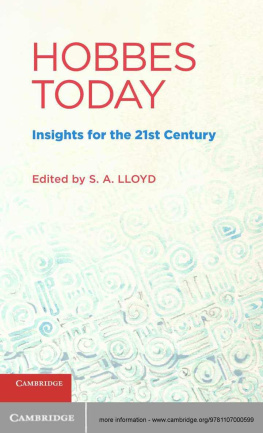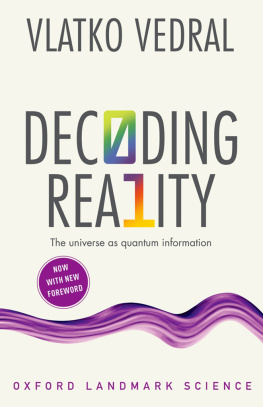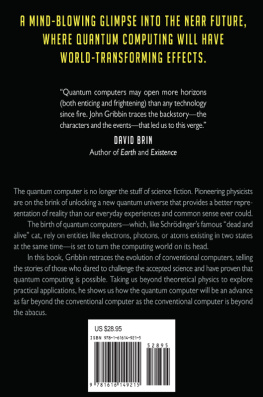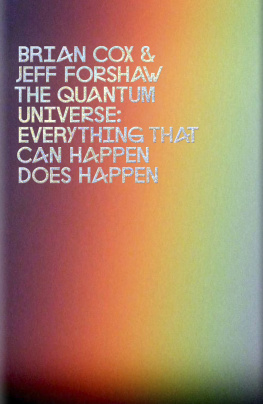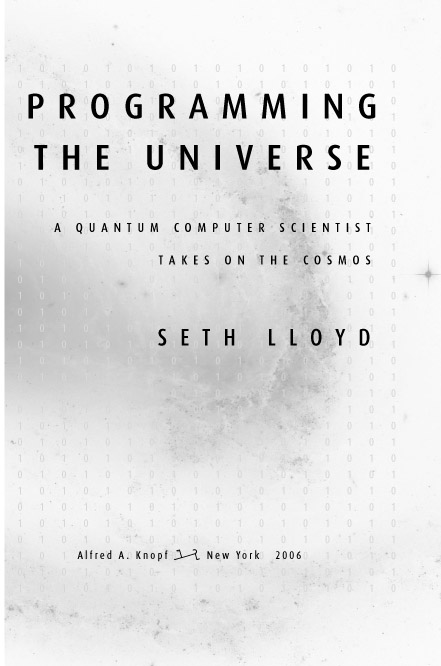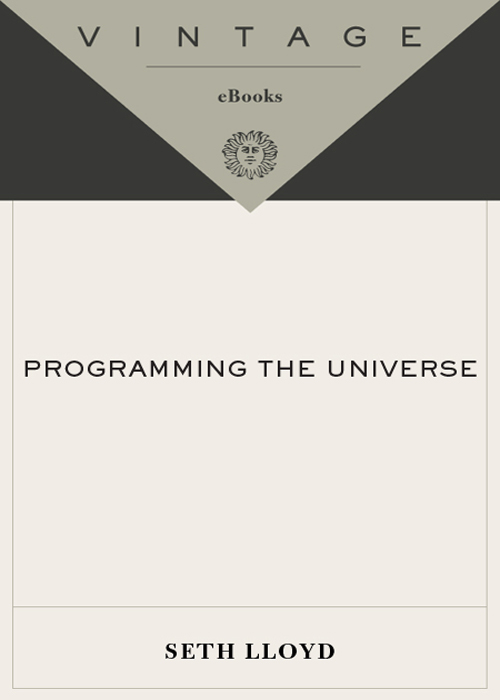
Contents
To Eve
PROLOGUE
The Apple and the Universe
In the beginning was the bit, I began. The chapel in the seventeenth-century convent that housed the Santa Fe Institute for the study of complex systems was filled with the usual collection of physicists, biologists, economists, and mathematicians, with a leavening of Nobel laureates. The grand old man of astrophysics and quantum gravity, John Archibald Wheeler, had challenged me to give a talk on the subject It from Bit. I had accepted the challenge. I was beginning to wonder if that had been a good idea, but it was too late to back down now. I held an apple in my hand.
Things, or its, arise out of information, or bits, I continued, nervously tossing the apple in the air. This apple is a good it. Apples have long been associated with information. First of all, the apple is the fruit of knowledge whose mortal taste brought death into the world, and all our woe. It conveys information about good and evil. Down the line, it was in the trajectory of a falling apple that Newton traced the universal laws of gravitation, and the curved surface of the apple is a metaphor for Einsteins curved spacetime. More directly, the genetic code locked in the seeds of an apple programs the structure of future apple trees. And last, but not least, an apple contains free energythe calories of bit-rich energy that our bodies need to function. I took a bite of the apple.
Clearly, there are many types of information contained in this apple. But how much information does the apple embody? How many bits are there in an apple? I placed the apple on the table and turned to the board to perform a short calculation. Interestingly, the number of bits in an apple has been known since the beginning of the twentieth century, since before the word bit. At first, one might think that an apple embodies an infinite number of bits, but this is not so. In fact, the laws of quantum mechanics, which govern all physical systems, make finite the number of bits required to specify the microscopic state of the apple and its atoms. Each atom, by its position and velocity, registers only a few bits; each nuclear spin in an atoms core registers but a single bit. As a result, the apple contains only a few times more bits than atomsa few million billion billion zeros and ones.
I turned back to face the audience. The apple was gone. Not good. Who had taken it? I glanced at the benign face of Wheeler and the impassive expression of Murray Gell-Mann, Nobel laureate, inventor of the quark and wearer of one of the worlds physics heavyweight title belts.
I cant continue without the apple. No it, no bit, I declared, and sat down.
The hunger strike lasted only a few moments before an impish engineer from Bell Labs produced the apple. I took it from him and held it on high, issuing a challenge to anyone who might attempt another theft. This was a mistake. For the moment, though, all seemed well. I continued:
All bits are equal in terms of the amount of information they can register. A bit, short for binary digit, is registered by two distinguishable states0 or 1, yes or no, heads or tails. Any physical system with two such states registers exactly one bit. A system with more states registers more bits. A system with four statesfor example, 00, 01, 10, 11registers two bits; a system with eight statesfor example, 000, 001, 010, 011, 100, 101, 110, 111registers three bits, and so on. As mentioned before, quantum mechanics guarantees that any physical system with finite energy confined to a finite volume of space has a finite number of distinguishable states and therefore will register a finite number of bits. All physical systems register information. In the words of IBMs Rolf Landauer, Information is physical.
Here Gell-Mann interrupted: But are all bits truly equal? What about the bit that tells us whether some famous unsolved mathematical conjecture is true or not? Compare that with a bit derived from a random coin toss. Some bits are more important than others.
True, I agreed. Different bits play different roles in the universe. All bits can register the same amount of information, but the quality and importance of that information varies from bit to bit. The significance of yes depends on the question asked. The two bits of information that determine the identity of a base pair in the apples DNA are far more important for generations of future apples than the bits of information registered by the thermal jiggling of a carbon atom in one of the apples molecules. Only a few molecules and their attendant bits are required to convey the smell of the apple, whereas billions of billions of bits are needed to provide the apple with its nutritional value.
But, Gell-Mann interjected, is there a mathematically precise way of quantifying the significance of a bit?
I did not have a complete answer to this question, I replied, still holding the apple. The significance of a bit of information depends on how that information is processed. All physical systems register information, and when they evolve dynamically in time, they transform and process that information. If an electron here registers a 0 and an electron there registers a 1, then when the electron goes from here to there, it flips its bit. The natural dynamics of a physical system can be thought of as a computation in which a bit not only registers a 0 or 1 but acts as an instruction: 0 can mean do this and 1 can mean do that. The significance of a bit depends not just on its value but on how that value affects other bits over time, as part of the continued information processing that makes up the dynamical evolution of the universe.
I continued to identify the bits from which the apple arises and to elaborate the roles those bits play in the processes that make up the apples characteristics. Things were going well. I had addressed the problem of it from bit and had survived the questioning. Or so I thought.
As I finished the talk and stepped away from the board, someone tackled me from behind. One of the audience members had taken seriously my challenge to steal the apple. Doyne Farmer was one of the founders of chaos theorya tall, athletic man. He grabbed my arms to make me drop the apple. To break his grasp, I slammed him back against the wall. Pictures of fractals and photos of pueblos fell. But before I could wriggle free, Farmer wrestled me to the ground. We rolled around the floor, overturning chairs. By now, the apple was gone. It had been reduced to bits.
Part 1
THE BIG PICTURE
CHAPTER 1
Introduction
This book is the story of the universe and the bit. The universe is the biggest thing there is and the bit is the smallest possible chunk of information. The universe is made of bits. Every molecule, atom, and elementary particle registers bits of information. Every interaction between those pieces of the universe processes that information by altering those bits. That is, the universe computes, and because the universe is governed by the laws of quantum mechanics, it computes in an intrinsically quantum-mechanical fashion; its bits are quantum bits. The history of the universe is, in effect, a huge and ongoing quantum computation. The universe is a quantum computer.
This begs the question: What does the universe compute? It computes itself. The universe computes its own behavior. As soon as the universe began, it began computing. At first, the patterns it produced were simple, comprising elementary particles and establishing the fundamental laws of physics. In time, as it processed more and more information, the universe spun out ever more intricate and complex patterns, including galaxies, stars, and planets. Life, language, human beings, society, cultureall owe their existence to the intrinsic ability of matter and energy to process information. The computational capability of the universe explains one of the great mysteries of nature: how complex systems such as living creatures can arise from fundamentally simple physical laws. These laws allow us to predict the future, but only as a matter of probability, and only on a large scale. The quantum-computational nature of the universe dictates that the details of the future are intrinsically unpredictable. They can be computed only by a computer the size of the universe itself. Otherwise, the only way to discover the future is to wait and see what happens.
Next page

